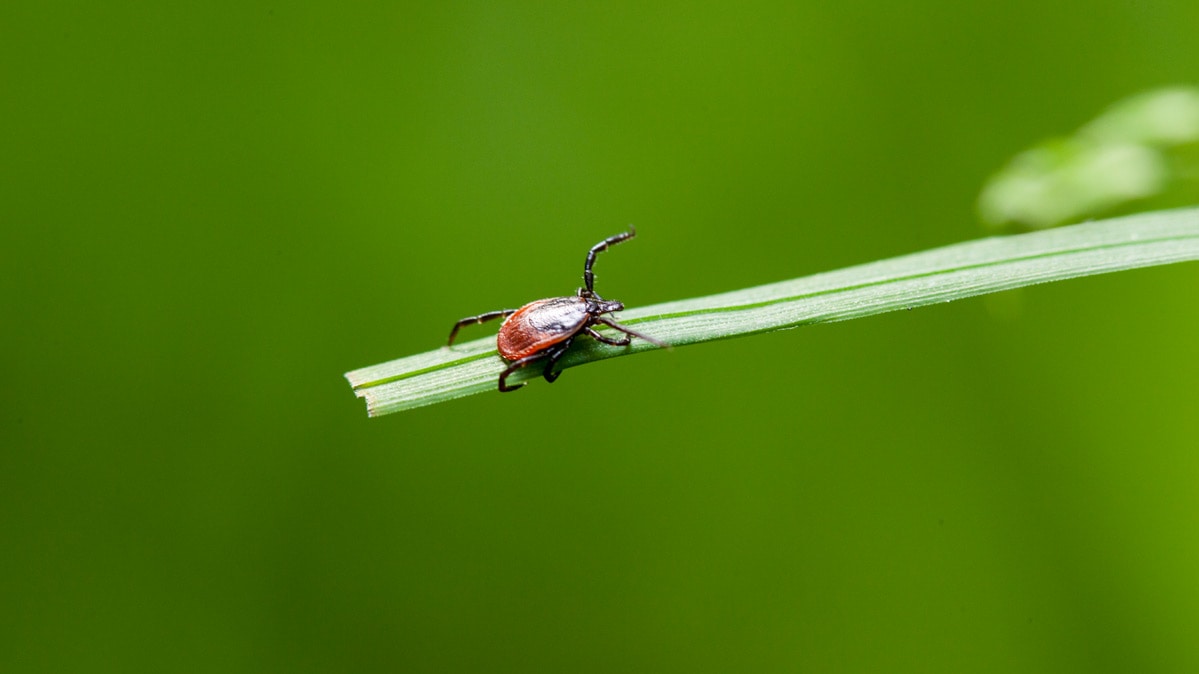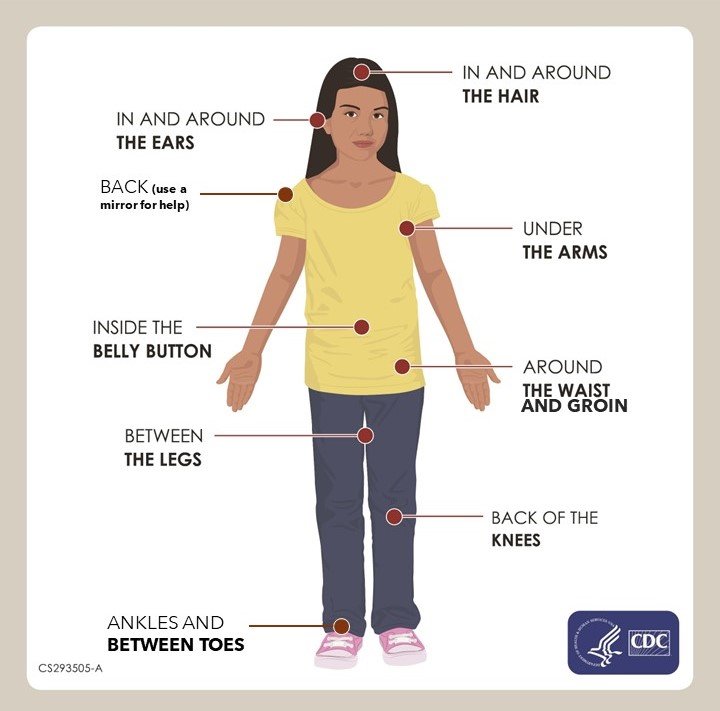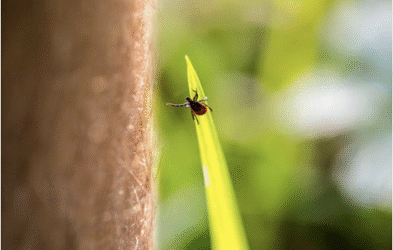Protection and Education
Tick-Borne Illness

Take the following steps to protect yourself from tick bites:
Wear ‘protective clothing’ to block ticks from reaching your skin. Tuck long pants in to socks or closed-toe shoes and tuck shirt into pants.
-
Use insect repellents that provide protection for the amount of time you will be outdoors:
-
Follow repellent label directions for use.
-
Use repellents containing 20%-30% DEET on your exposed skin and clothing to prevent tick bites.
-
Reapply repellents as needed.
-
-
Use repellents such as Permethrin for greater protection.
-
Permethrin kills ticks after a few minutes of exposure.
-
Follow label directions, permethrin should not be used on skin. Once permethrin is dried on clothing (2-4 hours) it is ready to use.
-
One application of permethrin to pants, socks, and shoes typically stays effective through several washings (stays protective for 6 weeks or 6 washings).
-
Send your clothing to be permethrin treated or buy pre-treated clothing which remains protective up to 70 washings. Insect Shield
-

Check your skin and clothes for ticks every day.
The immature forms of these ticks are very small and may be hard to see.
-
Shower or bathe as soon as possible after working outdoors to check for ticks.
-
Immediately remove ticks from your body using fine-tipped tweezers.
-
Grasp the tick firmly and as close to your skin as possible.
-
Pull the tick’s body away from your skin with a steady motion.
-
Clean the area with soap and water or rubbing alcohol
-
Removing infected ticks within 24 hours reduces your risk of being infected with the Lyme disease bacterium.
-
Put clothes in dryer for 15 minutes on high heat to kill ticks after being outside. Ticks may survive through the washing machine.
-
There are actions you can take to make your yard less suitable for ticks. View or page on Residential Yard Surveys to learn more.
-
Learn the symptoms of tick-borne diseases.
-
If you develop symptoms of a tick-borne disease seek medical attention promptly. Be sure to tell your health care provider that you work outdoors in an area where ticks may be present.
I’ve been bitten. What do I do?
The Tick Program recommends following the procedures and advice from the Center for Disease control outlined in this link: https://www.cdc.gov/ticks/pdfs/FS_TickBite.pdf.
To their excellent advice we would add a few Islands specific caveats:
1. Since we live in an area where Lyme disease and other tick-borne illnesses are common, we heartily endorse their suggestion that you seek medical advice if you have a deer tick that has been attached for more than 24 hours or is engorged or begun to “swell up”. We also endorse the preventative practice of taking the single dose of two doxycycline, which has been shown to reduce the risk of Lyme disease considerably, ONLY if certain criteria are met.
-
Please refer to CDC guidelines or TickSafety for further explanation on appropriate use of prophylactic medication
2. Much less is known about lone star ticks and how long they need to be attached before they can transmit any diseases, but they are the main concern for triggering Alpha-Gal Syndrome, an allergy to mammal-based products. You may want to consult a doctor if you find a lone star tick attached. Click HERE for help with identifying our three common species of ticks. You can also take a photo of the tick and
-
Email top-side photo of the tick to Patrick Roden-Reynolds at mvticks@gmail.com and I will try to identify it. You can also message us on Facebook at MV Tick Prevention Program.
-
You can also submit a photo of your tick to TickSpotters – hosted by University of Rhode Island
3. Most people we know do not see a doctor when they are bitten by a dog tick, since dog ticks rarely transmit disease organisms to humans. If you decide not to seek medical advice, you should still monitor yourself closely and note any unusual symptoms. A small percentage of dog ticks do carry Rocky Mountain Spotted Fever, a potentially serious disease if not treated quickly
4. We suggest that when you remove an attached tick you tape it to an index card and note the date it was removed or tape it to your calendar on the date it was removed. Use fine-tipped tweezers to remove ticks. Tick Remover tweezers
5. We agree with the CDC recommendations about pathogen testing a tick. However, if you want to have your tick tested click HERE for different testing options.
-
We suggest using TickReport, which maintains a database to help document pathogen prevalence and distribution.
Tick News
The Tall Tick Tales
Debunking Common Tick Myths Ticks have become a fact of life on Martha’s Vineyard, but unfortunately, so has the misinformation about them. From unproven extermination remedies...
Tick-Borne Illness Resources
Identify Tick Species
Types of Ticks on the Islands
Lone Star Tick
Common on the Islands
Alpha-Gal Syndrome
Learn About AGS
Public Presentations
Browse Tick Presentations
Video Resources
Informative Tick Videos
Yard Surveys
Residential Yard Surveys


